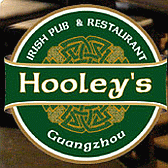|
|
| Chinese
History |
Independent
Kingdoms
|
|
The aim of this section
is to introduce the reader to other Kingdoms that are
now a part of Greater China. This work is quite difficult,
as nobody appears to have attempted to do this before.
Essentially all modern history books simply pick up
the story from when the Kingdom became a part of whichever
Chinese (Han) Dynasty or Empire, but leave you guessing
as to what happened prior when they were autonomous.
Our aim is to provide a contemporary view of what was
happening in the rest of what is now China, as China
grew over 20 millennia into what it is today. To put
this together coherently is awkward, as timelines shift,
and so does geographical location, whilst the demographics
are also in flux. Sometimes pressure from external groups
that do not directly invade China itself, have a profound
impact in shaping Chinese history. Other powerful tribes
may become lost or displaced + renamed over time; and
it is hard to track their exact ancestry.
We feel visual representation is vital to aid explanation,
so have referenced a superb set of maps produced by
our friend Thomas Lessman:
http://www.worldhistorymaps.info/
The Eastern World 550 BC
Courtesy Thomas Lessman - Click to Enlarge:
http://www.worldhistorymaps.info/images/East-Hem_550bc.jpg
Preface
Certainly the Bon Culture of modern Tibet, that previously
came from perhaps Tajikistan and the Northern Kashmir
region was immensely important. However, The Bon Culture
gives rise in later years to a religious divide that
crosses ethnic boundaries. The Ba Kingdoms of Chongqing
remained outside of mainline Chinese history for millennia.
Both Bon Culture and Ba Kingdom trace their ancestry
back to around 20, 000 BC; and to West and East of the
Tibetan plateau and Taklamakan dessert respectively.
Millennia later, as these two Kingdoms move and consolidate,
so we evidence the rise of contemporary human development
such as the Xinglongwa  (8500-7000 BC on the Liaodong Peninsular); and later
(7000 to 5400 bc) in Inner Mongolia and the northern
reaches of the Yellow River.
(8500-7000 BC on the Liaodong Peninsular); and later
(7000 to 5400 bc) in Inner Mongolia and the northern
reaches of the Yellow River.
Look at the map below and see how perhaps the Xinle
culture pushed the Xinglongwa westwards, and they displaced
the established Hongshan culture; that in turn moved
eastwards and displaced the Xinle.
Courtesy Thomas Lessman and produced
by + invented by Jonno Morris of China Expats - Click
to Enlarge:
http://www.china-expats.com/Images/Maps/CnPre_02.jpg
The borders north of China have been host to swathes
of invaders from time immemorial, most notable in their
absence are the Xiongnu on the Northern steppes of China,
who many consider to be the forefathers of the Hun.
These tribes were stopped by the early Chinese from
heading south, so they ventured West instead and over
the centuries came to ravage eastern and central Europe;
in their turn pushing the incumbents further westwards.
This explains a lot of European and British history.
The map (Top) above is excellent in showing China during
the decline of the Zhou Dynasty and Warring States period.
To the centre of the map you will find the two main
protagonists for millennia side by side - The Qin and
The Jin. The cradle of modern Chinese (Han) culture
lies in the southwest corner of Jin territory next to
where number 12 territory (Zhou) points west. This is
the verdant valley where the Yellow and Yangtze rivers
come very close together. All Chinese history normally
begins in this small area.
Circa 220 BC The first Chinese Emperor of the Qin began
construction of the Great Wall of China in order to
keep the constant threat from the north in check. By
this time the Xiongnu had moved west, but many nomadic
tribes persisted to view China's vast riches and resources
over millennia. The ebb and flow of humanity in this
region would demand an entire book to itself, so forgive
us for featuring only those of modern importance, and
in particular Han Chinese long time adversary the Jin.
This name appears many times over the course of several
thousand years, and they are also known more recently
as 'Jurchen' and 'Manchu'. The Qing Empire, which was
to be the last great empire of China, was in fact of
direct Jin descent.
The other major Northern force was of course the Mongols,
who ruled China in two distinct parts, which are known
as the Yuan Empire. Much of China was subjugated by
the infamous Genghis Khan, and then there is a time
of turmoil and restructuring. His son Ogedei is important
for continuity, but it is his nephew the Kublai Khan
who came to dominate and shape the map of what is now
China. He was the only relative interested to any great
degree in China after the passing of Genghis Khan, and
other pretenders to his throne sought to reap riches
elsewhere in the world.
Central and Western China is nowadays dominated by the
Urgars, who have a long association with main Chinese
empirical growth. Beginning as a small and independent
kingdom located around modern day Gansu Province, their
might and importance grew through treaties of war and
intermarriage. Today their power is shifted Westwards
and they are mainly of Moslem persuasion, occupying
Gansu, Qinghai and Xinjiang Provinces.
The other major group located mainly in the south of
this vast territory are Tibetans who have left the high
plateau centuries behind, and adapted to life on the
escarpment slopes and dessert fringes of Taklamakan
These people trace their ancestry back more to the Zhang
Zhang, who once held a large empire in Southwestern
Tibet and bordering Sichuan and Qinghai Provinces.
Another great empire was that of Dali in Yunnan Province,
which flourished during the Tang Empire.
My homeland in neighbouring Guangdong Province was given
to several versions of Yue Empires, whose influence
focused mainly south, and west as far as Sichuan, Yunnan,
whilst controlling for long periods northern Vietnam,
who's Lac Viet Empire warred with over millennia. These
overlap and are sometimes contemporaneous with the great
Khmer Empire of the Siamese Peninsula. In fact modern
Thai and Cantonese languages still share 30% of common
basic words.
Summary
In order to put this contemporary history of China together
we are decided to first divide it into three time zones:
Ancient Cultures from 20, 000 BC to 8, 500 BC; Early
Civilizations from 8, 500 BC to 3, 000 BC; and Emerging
Kingdoms from 3, 000 BC to 1, 000 AD.
We then found a need to break down the latter two above
for simplicity. Early Civilisations require the making
of new maps, and whilst mainly researched already, these
take time to produce and document. To this end we are
working with Thomas Lessman to offer you a graphical
representation that is easy to follow.
There is far more documentation concerning Emerging
Kingdoms, so as well as inventing dedicated maps, we
are also looking at dividing this section into manageable
regional chunks, related to their interactivity. Some
of the protagonists are non-Chinese peoples who have
profoundly influenced Chinese development - so we have
decided to include them also. Our interim plan is as
follows:
* Sichuan and geographically central China.
* Emerging China = slightly north and east a bit, the
Han Chinese development
* Northern Tribes
* Western Plains and passage to the West
* Tibet and Southern Mountains
* Southeast China, Yue States and Khmer Peninsula
* Catch-all for anything important that doesn't quite
fit into the above
Statement
As author, I feel a little bit like a puppy with a hedgehog
- this thing is immense, prickly, and unknown! Much
is already researched, documented, and is ready for
publication; but maps take a lot of time to produce.
Without maps and a coherent structure, this will not
be informative or make much sense - so please bear with
us whilst we assemble and edit.
Meanwhile we never seem to escape the pronunciation
of Chinese words in English, especially when this passes
into ancient history. For instance, the words 'Qiang'
and 'Zhang' when spoken in Chinese are extremely similar
- to the point where you as a reader may not be able
to differentiate them; even if spoken in Cantonese by
myself. On the map at top of page you will see reference
to a kingdom called 'Qiang' just east of the Tibetan
plateau. We already know this area was where the 'Zhang-Zhang'
held power during a contemporary period. Now we need
to document that these are the same people, anglicised
in a different way, at a different time, by ancient
writers of perhaps differing ethnicity. And this is
one simple example of hundreds!
Footnote
This work in progress will develop over the coming months
from June 2010. However I do need to clear my head of
it all for a few days (I admit to being human), get
working on the maps, update China Expats Home Page
(New residency visa regs), and write a couple of missives
- before I forget what happened hehe!
Meanwhile more pages will continue to become available
online. For instance, I plan to publish the first draft
of Sichuan and Central China today - but already know
there are more kingdoms to add, especially concerning
The Warring States period.
I thank you for your tolerance, and hope to have this
new section finished in a few weeks.
webmaster |
|
This
information is as supplied by Wikipedia, as dated March
2009 or later, and/or other reliable sources.
Maps (Unless stated otherwise)
are provided in association with Thomas Lessman
Web: www.worldhistorymaps.info
Disclaimer:
Please check this information yourself as it may alter
without notice, and whilst we try our best to ensure
it is correct, please do not hold us responsible for
any errors - this is intended as a simple guide only |
|
| Search
this Website |
|
|
| Our
Friends |
Excellent
& Free Online Chinese Language Portal

Thousands of free print-friendly Chinese reference sheets,
tests and revision aids.
Easy Learning format &
Listen to Spoken Words |

Professional
Visa Services
Company
Formation Packages
.
|

British Foreign Office
Resource and Advice for Travellers Worldwide |

Chinese Embassy in UK
Information About China
International Relations
Visa & Consular |

UK Embassy in China
Information About UK
International Relations
Visa & Consular |

|
Excel
Education |
Languages Courses
Study Abroad
Employability
Summer Camps
Information for Teachers |
|

Excellent and relaxing base to
explore this most beautiful of regions in all China! |
Down The Road.org
How We Traded Our Ordinary Lives For a Global Bicycle Touring Adventure

See
Us in China |

Empowering Underprivileged Children
& Their Communities = Worldwide |
 |

Based in Shangri-la,
Yunnan
Province
Dedicated to Exploring Remote Areas of China
Committed to Nature Conservation and Preserving Ethnic
Cultures & Traditions
|

Based in Xi'an,
China's Premiere Travel Agency and International Travel
Community -
Committed to providing:
Best travel deals & current information for all
International Travellers |

Pearl Dragon
Vast
Online Trading and Information Resource
Link goes to Chinese Tourism and Galleries Section |
|